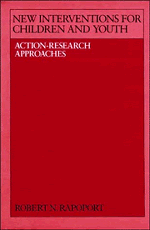Summary
Children generally come into contact with law courts either as offenders or as victims. In whichever case, it is recognized that they are different from adults. As minors they are not, in the legal sense, fully competent. Various kinds of competency are recognized in law: to have committed a crime, to be able to stand trial, and to be responsive to dispositions of one kind or another, among others (Weithorn, 1984). Defining children as not yet fully competent affects both judgment and disposition.
As immature “dependents,” children are vulnerable not only to the circumstances bringing them before the courts but to the impact of the various legal proceedings. Legal reforms have produced a variety of experiments aimed at maximizing the protective elements in the court experience and minimizing the traumatic ones.
An appreciation of these issues was behind the historical development of special institutions and procedures for juveniles. Earlier social interventions included reformatories and houses of refuge. Juvenile courts evolved with an increased recognition of the needs of the child and an emphasis on children's rights. Emerging at the turn of the century, the juvenile courts expressed this emphasis in what Parsloe (1978) calls the “welfare approach.” Based on the medical model, the court was seen as a “friend of the juvenile” (whether an offender or a person in need of care), a confederate of his family, and a place where expert help could be mobilized as a matter of human rights for individualized assessment and treatment of the problems confronted.
- Type
- Chapter
- Information
- New Interventions for Children and YouthAction-Research Approaches, pp. 148 - 184Publisher: Cambridge University PressPrint publication year: 1987



